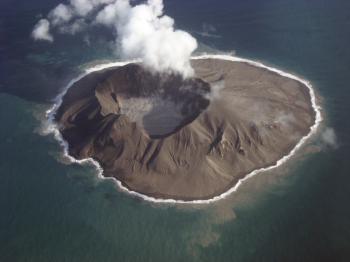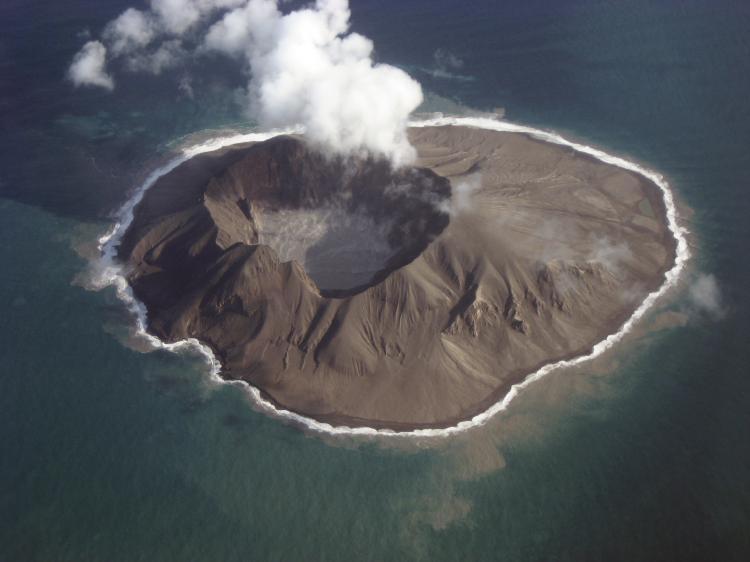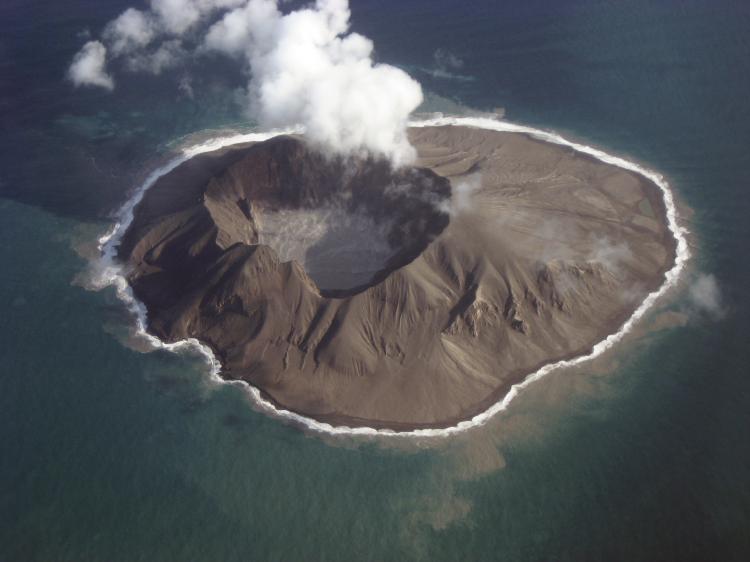Two years ago, Kasatochi, a once picturesque paradise found in the Aleutian island chain in the Alaska Maritime National Wildlife Refuge, instantly became a wasteland. When a volcano erupted, all life on the remote fertile island was seemingly destroyed.
The low-growing grasses and wildflowers that blanketed the Kasatochi’s steep slopes disappeared in a flash. The island and surrounding seafloor were covered with thick layers of ash and deposits that spewed from the Kasatochi volcano.
However, as signs of life once again emerged on Kasatochi, a group of scientists were there to study the return.
The summer following the eruption in 2009, scientists with the U.S. Geological Survey USGS), U.S. Fish and Wildlife Service, and the University of Alaska Museum of the North began long-term studies on the island in an effort to better understand the effects of catastrophe, and to study the recovering ecosystem.
“When we first landed on the island, we were unsure of what we would find,” said project manager Tony DeGange of the USGS in a statement. “The formerly lush, green island was uniformly gray and in the 10 months since the eruption, considerable erosion of volcanic ash had occurred.”
Volcanic eruptions in Alaska are relatively frequent. The Aleutians are in what is known as the Pacific Ring of Fire.
Kasatochi inspired one of the first studies of its kind in the remote Aleutian Islands. Geologists, botanists, entomologists, ornithologists, and marine ecologists detailed their findings in a series of 10 reports published in the August 2010 issue of the journal Arctic, Antarctic, and Alpine Research.
Researchers visited Kasatochi and nearby islands four times to examine the effects of the eruption and establish a baseline to compare long-term observations. Scientists set up sampling plots and equipment such as seismometers, time-lapse cameras and bird song recorders to document the return of life on Kasatochi, which actually emerged quite quickly.
By the end of the summer, scientists found several varieties of green plants scattered around the island. Sandra Talbot, a USGS research geneticist explained that most of these plants probably originated from underground root systems, or seeds in areas that were protected from hot volcanic flows, but merely covered in ash.
Researchers soon discovered signs of other life such as wingless carrion beetles, kelp flies, and other insects. Thousands of seabirds returned to the island that first summer, yet scientists noted that without the right terrain, they were not able to nest successfully.
Kasatochi was once a major seabird breeding colony in the Aleutian Islands. Before the eruption, about 250,000 least and crested auklets were found on the island. However, without appropriate rock crevices, scientists discovered that the birds were struggling to survive.
“The auklet colony was buried under volcanic debris and ash. They were unable to locate suitable nesting crevices and laid eggs on the ground or in the water instead. It will be interesting to see if erosion eventually exposes the rock crevices that these birds need for nesting or if they eventually abandon the island,” said Jeff Williams of the U.S. Fish and Wildlife Service’s Alaska Maritime National Wildlife Refuge in a press release.
One species that managed to survive is the island’s endangered Steller sea lions. They were perhaps the first signs of life found on Kasatochi following the eruption. According to scientists, the sea lions were one of the few species to breed successfully the following year.
The low-growing grasses and wildflowers that blanketed the Kasatochi’s steep slopes disappeared in a flash. The island and surrounding seafloor were covered with thick layers of ash and deposits that spewed from the Kasatochi volcano.
However, as signs of life once again emerged on Kasatochi, a group of scientists were there to study the return.
The summer following the eruption in 2009, scientists with the U.S. Geological Survey USGS), U.S. Fish and Wildlife Service, and the University of Alaska Museum of the North began long-term studies on the island in an effort to better understand the effects of catastrophe, and to study the recovering ecosystem.
“When we first landed on the island, we were unsure of what we would find,” said project manager Tony DeGange of the USGS in a statement. “The formerly lush, green island was uniformly gray and in the 10 months since the eruption, considerable erosion of volcanic ash had occurred.”
Volcanic eruptions in Alaska are relatively frequent. The Aleutians are in what is known as the Pacific Ring of Fire.
Kasatochi inspired one of the first studies of its kind in the remote Aleutian Islands. Geologists, botanists, entomologists, ornithologists, and marine ecologists detailed their findings in a series of 10 reports published in the August 2010 issue of the journal Arctic, Antarctic, and Alpine Research.
Researchers visited Kasatochi and nearby islands four times to examine the effects of the eruption and establish a baseline to compare long-term observations. Scientists set up sampling plots and equipment such as seismometers, time-lapse cameras and bird song recorders to document the return of life on Kasatochi, which actually emerged quite quickly.
By the end of the summer, scientists found several varieties of green plants scattered around the island. Sandra Talbot, a USGS research geneticist explained that most of these plants probably originated from underground root systems, or seeds in areas that were protected from hot volcanic flows, but merely covered in ash.
Researchers soon discovered signs of other life such as wingless carrion beetles, kelp flies, and other insects. Thousands of seabirds returned to the island that first summer, yet scientists noted that without the right terrain, they were not able to nest successfully.
Kasatochi was once a major seabird breeding colony in the Aleutian Islands. Before the eruption, about 250,000 least and crested auklets were found on the island. However, without appropriate rock crevices, scientists discovered that the birds were struggling to survive.
“The auklet colony was buried under volcanic debris and ash. They were unable to locate suitable nesting crevices and laid eggs on the ground or in the water instead. It will be interesting to see if erosion eventually exposes the rock crevices that these birds need for nesting or if they eventually abandon the island,” said Jeff Williams of the U.S. Fish and Wildlife Service’s Alaska Maritime National Wildlife Refuge in a press release.
One species that managed to survive is the island’s endangered Steller sea lions. They were perhaps the first signs of life found on Kasatochi following the eruption. According to scientists, the sea lions were one of the few species to breed successfully the following year.








Friends Read Free